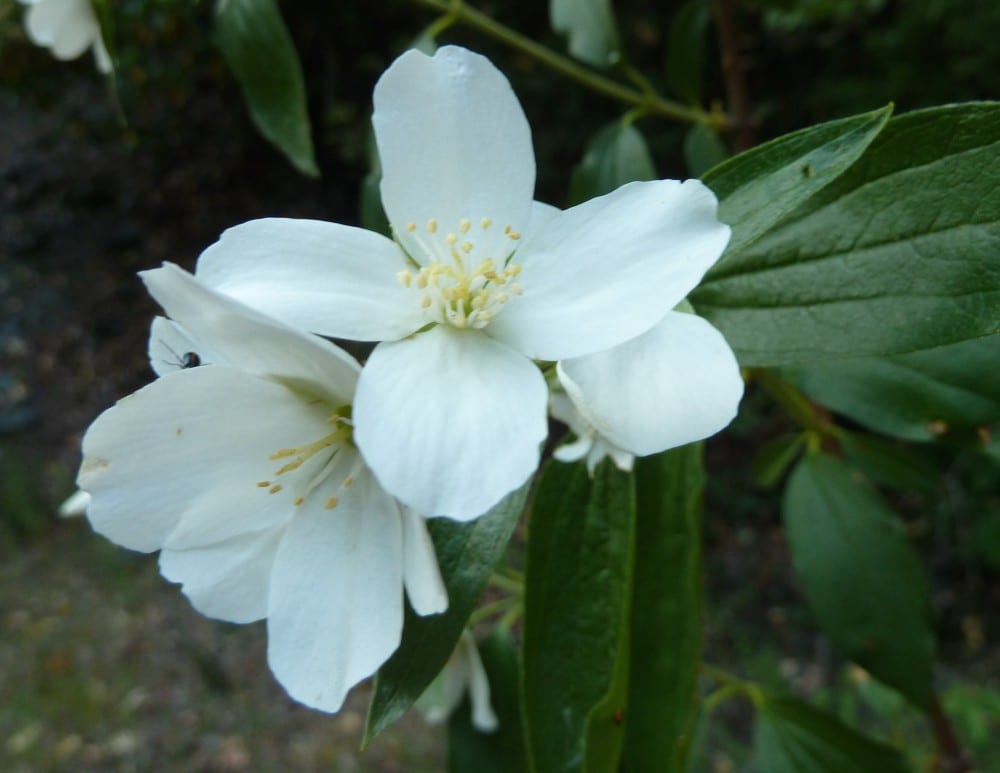Description
One of the most beautiful native shrubs in the West, mock orange is a large, deciduous shrub in the Hydrangeaceae (Hydrangea) family. Mock orange is widespread and locally common, and is adaptable to a wild variety of growing conditions. The showy, 2″, four-petaled white flowers bloom in May-July, depending on elevation, and produce a heavenly and intoxicating scent reminiscent of orange blossoms that will take your breath away. Mock orange is very attractive to look at, but it may be the intensely sweet fragrance that will make you enamored with this lovely shrub. A large shrub in a sunny spot can be covered in masses of white, scented flowers at the height of bloom. Mock orange sends out long, arching stems with opposite leaves, and the graceful branches can reach up to 12′ tall, though it generally grows 5′-8′ tall. Pollinators of all kind are attractive to mock orange, including hummingbirds, native bees, butterflies, moths, and pollinating flies. With all its benefits it’s a wonder that mock orange is not more commonly available in nurseries and is not planted more widely. As the species name implies, mock orange was first described and collected by Meriwether Lewis in 1806 during the Lewis and Clark expedition. Native American tribes used many parts of the plant for cultural use, including using the stems for making arrow shafts, bows, cradles, and pipes. While preferring open woods and riparian areas, mock orange also grows in chaparral on dry, rocky slopes and open ridges. Mock orange is drought tolerant and requires very little maintenance once established, but may benefit from occasional summer irrigation at low elevations. Great for habitat restoration projects, especially in riparian areas, and erosion control on dry slopes and rocky areas. Deer resistant once established above the browse line, but deer will eat new shoots and young plants.
Seed Germination Instructions
90-120 days cold-moist stratification. Sow outside in fall.





